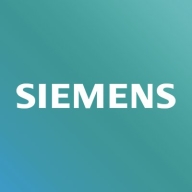

OpenText Software Delivery Management and Polarion ALM are competitors in the Software Development Lifecycle Management space. OpenText gains an edge due to its strong support and pricing mechanisms like flexible licensing, while Polarion is favored for its comprehensive traceability and requirements management features.
Features: OpenText Software Delivery Management offers a comprehensive toolset for software lifecycle management, supports Agile methodologies, and integrates with DevOps pipelines. It provides robust reporting and consolidates management tasks into one platform. Polarion ALM prioritizes requirements management and traceability. It supports various development methodologies and offers end-to-end traceability but may need third-party tools for additional features.
Room for Improvement: OpenText could enhance integration flexibility and usability, especially in task comments and attachments handling. Polarion ALM needs better integration with external tools and a more intuitive interface. OpenText is working on bridging Agile and legacy testing methods, while Polarion could benefit from simpler configuration handling.
Ease of Deployment and Customer Service: OpenText provides both on-premises and hybrid cloud deployment options with engaged technical support, including R&D collaboration for client issue resolution. Polarion ALM offers similar deployment options but requires enhancements in its support structure to address complex issues efficiently.
Pricing and ROI: OpenText is considered expensive but justified by its comprehensive features, and flexible licensing offers scalable solutions for different demand levels. Polarion ALM is high-cost, potentially prohibitive for smaller enterprises, but offers long-term value through its robust requirements and traceability management capabilities.
| Product | Market Share (%) |
|---|---|
| Polarion ALM | 7.2% |
| OpenText Software Delivery Management | 4.7% |
| Other | 88.1% |


| Company Size | Count |
|---|---|
| Small Business | 7 |
| Midsize Enterprise | 2 |
| Large Enterprise | 32 |
| Company Size | Count |
|---|---|
| Small Business | 10 |
| Midsize Enterprise | 3 |
| Large Enterprise | 12 |
OpenText Software Delivery Management provides application lifecycle management with Agile and Waterfall support. It features intuitive interfaces, CI/CD integration, automated testing, and robust reporting, improving project management efficiency and usability.
Designed to enhance teams' productivity and streamline processes, OpenText Software Delivery Management integrates seamlessly with Agile methodologies. Its comprehensive backlog and requirements management, user stories, and test management make it a complete tool for managing the development lifecycle. The platform aligns with DevOps, providing traceability and extensive customization options. Traceability from requirements to deployments is enhanced, making it easier for teams to track progress. It offers integration with popular tools like Jenkins and JIRA, ensuring a unified approach to continuous delivery and testing management.
What key features does OpenText Software Delivery Management include?OpenText Software Delivery Management is implemented across technology-focused industries, supporting Agile processes like requirements management and defect tracking. Organizations use it to standardize development workflows and optimize continuous delivery integration, choosing it for its ability to support both Agile and Waterfall methodologies within application lifecycle management.
The world’s first 100% browser-based ALM enterprise solution, which enables seamless collaboration across disparate teams, multi-directionally linked work items, full traceability, accelerated productivity and automated proof of compliance.
We monitor all Application Lifecycle Management (ALM) Suites reviews to prevent fraudulent reviews and keep review quality high. We do not post reviews by company employees or direct competitors. We validate each review for authenticity via cross-reference with LinkedIn, and personal follow-up with the reviewer when necessary.